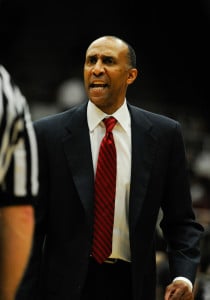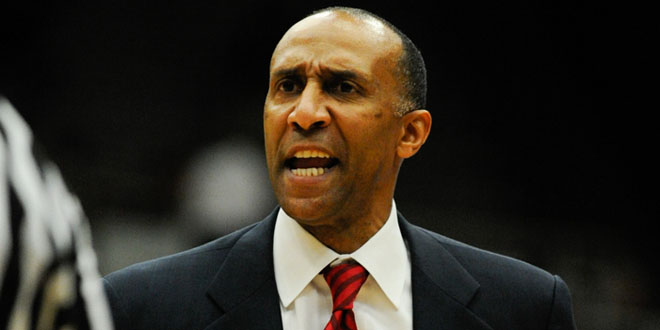For the Stanford men’s basketball team, the 2013-14 season was supposed to mark a definitive moment in the direction of the program. Athletic director Bernard Muir placed the onus on head coach Johnny Dawkins and his staff at the end of last season, making it publicly known that the Cardinal want to be “playing for a conference championship” and should “play well into March on the grand stage of March Madness.” Or else.

At the end of this season, we were supposed to know exactly what the state of the program was; we would know whether or not Dawkins was the man for the future, whether this senior class would finally live up to the potential it had flashed at times in the past or whether the program would finally head in a different direction after six seasons under Dawkins.
But perhaps we were fools to expect such clarity given the circumstances, because the 2013-14 Stanford men’s basketball season was decidedly a mixed bag, although the run to the final sixteen certainly was sweet.
If nothing else, the Men of Maples always kept us on our toes; just when we thought we had them figured out, they came back and surprised us in one way or another. While the maddening inconsistency that had permeated the team’s results under Dawkins’ guidance in previous seasons persisted once more throughout the 2013-14 campaign, it could also be argued that for the first time, the end result finished closer to “meeting expectations” than “disappointment” on the scale of possible outcomes.
The problem with the assessment that this team met expectations is that it relies on an exceedingly small sample size. While it’s not fair to entirely discount the team’s regular-season successes, without which there would have been no postseason magic, it’s also fair to say that this season was deemed a “success” only because the Cardinal won two consecutive games in the tournament.
Without that, Stanford failed to reach any of the goals the team had set for itself before the beginning of the season — prime among them, contention in the conference championship race. The Cardinal may have finished tied for third, but that standing was shared with four other teams. Stanford also never came close to challenging Arizona for the conference crown, and it ended with the same Pac-12 record, 10-8, that it finished with two seasons ago, when it was seventh in the league.
Thus, we are faced with the age-old conundrum in college basketball. When you can’t have both, what’s more important: sustained regular season results, or a deep run into March?
Undeniably, the thrill of playing into the second weekend of this year’s NCAA Tournament erased a lot of the heartburn the team caused during the regular season, perhaps enough to mitigate some of the more forgivable defeats the team endured this season. I, for one, had certainly forgotten to some extent the undeniable thrill of having a proverbial horse in the race that late into the Madness, and spent much of my senior spring break in a tizzy of unexpected excitement.
The thrill of March and its undeniable importance in measuring a season aside, the 2013-14 Stanford men’s basketball season was, in sum, a wholly uneven experience. Two things of particular note, then, are important in evaluating how we should view this season as a fan base, and more specifically, the way in which we should evaluate Dawkins moving forward.
The most recent edition of Stanford basketball unquestionably reached greater heights than it ever had during Dawkins’ tenure, but the problem remains that these highs were once again mitigated in part by inexplicable lows.
To further illustrate my observations, let me provide some examples. Stanford won two NCAA Tournament games for the first time since 2008, and for just the sixth time in program history. Given that 76 NCAA Tournaments have been played, that is no insignificant accomplishment.
The Cardinal also defeated a top-10 team — on the road, no less — for the first time since 2008, in national-champions-to-be Connecticut. Counting their two tournament wins, Stanford defeated four other ranked teams during the course of the season, and finished with nine wins over NCAA Tournament squads. They pushed top-ranked Arizona to the brink, beat UCLA for just the third time since 2008 and dismantled Arizona State in a game that was crucial to the team’s tournament hopes.
Stanford placed two players on the Pac-12 First Team, one on the All-Defensive Team, had the conference’s Most Improved Player of the Year and the Scholar-Athlete of the Year and dominated the league’s All-Academic team. In other words, there is a lot this team can be proud of when it looks back on the season that was.
But once again, the results on the court were uneven.
Stanford did not register a winning streak longer than four games, and still has not won four consecutive conference games with Dawkins as head coach. The team surrendered 112 points to BYU at home, was thumped by Pittsburgh on national television, lost at Maples to a Cal team that missed the tournament and suffered poor road losses to mediocre conference foes Oregon State and Washington.
The Cardinal were embarrassed by UCLA in the Pac-12 Tournament semifinals, failed to come away with a win at home against Colorado in a crucial game down the stretch and failed to capitalize on the opportunity of playing No. 11-seed Dayton in the Sweet Sixteen. While Dayton unquestionably played well, the Cardinal certainly did not bring their A-game for the most important contest of the season.
With what then, are we left, given the overall outcome of the season?
It depends on where your expectations for Stanford basketball lie. If you evaluate a season based solely on the team’s success in March, then undoubtedly you are satisfied with the way the season ended. If, like Muir and others, you expect the team to be able to compete for conference championships on a regular basis, and that runs in March are to be expected and not marveled at, you are probably left wanting more.
I, for one, find myself in the latter camp of Stanford basketball observers, if only because of the sustained successes of virtually every other athletic program on campus. Given the resources that Stanford has and its tradition of excellence, expecting anything but the highest level of play is extremely un-Stanford-like at its very core. So while the 2013-14 Stanford men’s basketball season was certainly a compelling one, I was left wanting more. Until Maples is sold out on a nightly basis, and until the Cardinal is battling for the Pac-12 crown, we as fans of the team have a responsibility to accept nothing less.
I think Dawkins, his staff and his players would be the first ones to agree with that assessment. Stay tuned.
Contact Daniel E. Lupin at delupin ‘at’ stanford.edu.
